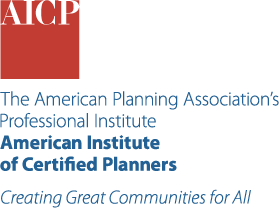New Ordinance Aims to Boost Sacramento’s Housing Supply

When Nguyen Nguyen, an associate planner in Sacramento, California, began meeting with residents about housing concerns in 2021, he started hearing similar stories. "We were hearing from the community that housing prices were very unaffordable — and becoming increasingly unaffordable," he says. "There was a need for more housing, but a lack of supply."
Over the next three years, Nguyen and the planning staff worked with residents and city officials to create an ordinance to address those concerns. The result was the Missing Middle Housing Interim Ordinance, which, when it was passed in September 2024, was the first in the state to allow multi-unit housing in all single-family-zoned neighborhoods.
Creating a Plan for Success
Sacramento is no stranger to zoning reform and other policy changes to increase housing stock. The city methodically began making changes to its processes, like eliminating parking requirements, simplifying permitting, and allowing staff members to approve projects instead of everything having to go before the city council.
"Not having to go to a public hearing saves two to three months from a project's timeline," says Tom Pace, director of community development in Sacramento. In 2021, at the one-year mark of when staff began approving some projects, he says the number of private development projects that needed to get city council approval shrank by 41 percent. The streamlining measures also primarily benefited residential projects, with 2,300 residential units approved at the director or staff level.
Those numbers continue to trend favorably for the city. In 2024, of the nearly 600 development applications received, Pace says just six percent required a hearing before the Planning and Design Commission, and just one percent required a city council hearing.
These changes helped pave the way for Nguyen and others when, in 2021, Sacramento began work on updating its general plan. "We were proposing some ideas that 10 or 20 years ago were probably frowned upon by the community, but I think it was the right time because people were now having these conversations," Nguyen says. "There was a sense that we needed to engage in some local change with what was happening at the national level. The status quo wasn't working."
The missing middle component became a natural spinoff from the work being done on the general plan, but not without its share of uncertainty. "A lot of people were very angry and upset that we were proposing such a big change to their neighborhoods," Nguyen says. "It was a very tough conversation at first." Residents questioned if a missing middle ordinance would truly lower housing costs or if it would instead lead to displacement, so staff worked with Opticos to study the issue. Four reports were generated as a result, with answers to that question and others, as well as recommendations for the city council to consider.
"I think one of the big takeaways for me, personally, is when people raise a question or a concern, no matter how complex or hard it is, make sure that they feel like we are listening to them and feeling like we are doing what we can to address their concerns. I think that was a big part of our success in being able to get past those barriers."
—Nguyen Nguyen, a planner in Sacramento, California
Expanding Housing Options
After the general plan update was approved in February 2024, the focus shifted to the missing middle ordinance. "A big part of our engagement strategy [at that point] was to look at who in the community this policy would benefit," Nguyen says. Staff also hosted walking tours with the local AARP chapter to visit already existing missing middle housing examples in Sacramento.
When the ordinance was passed unanimously later that year, it replaced density limits on housing units with maximum floor area and allowed as many as four to 10 units on cottage or bungalow courts, as well as tiny homes on small lots. Essentially, there would be no limitation on the number of units that could be built if the building itself fits the lot size and the character of the neighborhood.
"In a housing crisis, we shouldn't care as much about the number of units and the number of people living in that building," Nguyen says. "If you're concerned about neighborhood compatibility, then focus on the size and the look of the building through height and setback limitations."
The ordinance also added anti-displacement provisions, such as limiting the demolition of existing structures or housing units that were regulated, affordable, or had a tenant with an active lease within the past year. "We would not accept applications for those situations, and there also could not be fewer units than what already existed," Nguyen says. "You can't demolish a five-story building or a five-unit building and then have three units in the end."

Sacramento's Missing Middle Housing Ordinance and other zoning reform efforts hit on several of the 9 steps to creating a better system for housing supply, which planners can learn more about in the Housing Supply Accelerator Playbook.
Since the ordinance was enacted, most of the applications received by the city have been for accessory dwelling units and duplexes, or development on vacant infill lots. But the overall results have been positive.
"It's definitely pushing people to become more innovative," Nguyen says.
Top image: As part of their community engagement efforts, Sacramento planners worked with the local AARP chapter to host a walking tour for residents through the city's historic central grid to see examples of already existing missing middle housing. Photo courtesy of the City of Sacramento's Community Development Department.
ABOUT THE AUTHOR


